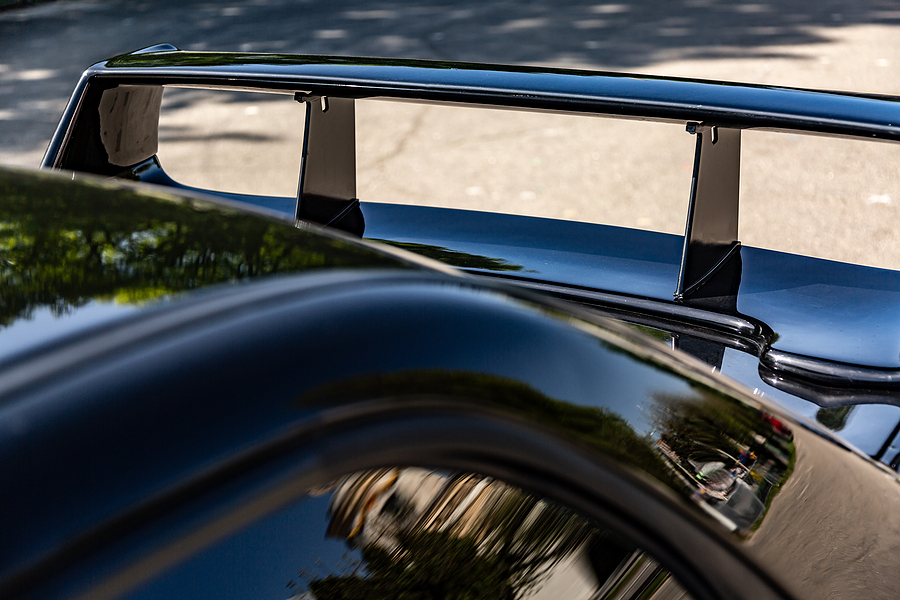A Breakdown of What a Spoiler Does for Your Vehicle

To lower wind resistance (or drag), spoilers are designed to alter the airflow above, around, and below cars. By “spoiling” airflow, they lessen the detrimental consequences of that airflow. This, in turn, increases downforce and increases traction at high speeds.
During the 1960s, spoilers began to appear on race cars and other high-performance vehicles to improve their aerodynamics (the way air flows around a car). Automobile manufacturers were later compelled to modify the aerodynamics of all their models to achieve better fuel efficiency ratings under government rules. At highway speeds, a car with less wind resistance consumes less gasoline.
Most people envision a wing-style spoiler resting above the deck lid of a car when they hear the word “spoiler,” but spoilers can also be employed at the front of a vehicle to deflect air to the sides to reduce airflow beneath the car. The side “skirts” on the rocker panels are also spoilers.
Aerodynamic drag increases when a vehicle speeds up, making the engine work harder to keep up with the car. As a result, a “lift” is created, lowering the vehicle’s grip and making it less stable. To keep air from flowing under the car, front spoilers are used. Downforce is created by spoilers in the back of the vehicle, where there tends to have more turbulence and generates more excellent lift.
If you look at the whole picture, spoilers could be a minor portion of it. Several variables affect airflow, including how a car looks and how high it is, how much grille space it has, the form of the front bumper, and how the headlights are positioned.
Before a car goes on sale, automakers spend millions refining its aerodynamics to increase fuel efficiency, high-speed stability, and wind noise. Many vehicles feature a little “lip” spoiler on the trunk lid and an air dam beneath the front bumper as their only spoilers. Although specific performance models have more pronounced rear spoilers or wings atop their trunks, this doesn’t always suggest that they’re more aerodynamic or can go faster.
In theory, a rear wing that is adequately constructed can create downforce instead of the lift. Still, any appendage attached to the vehicle’s exterior is sure to interfere with its aerodynamics. If the wing is poorly built, you may lose fuel efficiency, peak speed, or stability.
It’s essential to keep in mind that many performance versions don’t claim to have better aerodynamics or downforce. The implication here is that they don’t mean what they say. Aerodynamic gear like spoilers, wings, and other “aero” accessories are also sold by dealers and aftermarket businesses, but most of the time, they’re only for aesthetics.
Spoilers might have unintended consequences. There are several examples of this, such as spoilers on NASCAR stock cars extending upward from a high-performance vehicle’s trunk. Aerodynamic testing has shown that the liftgate of a pickup truck is less disruptive to the vehicle’s flow when it is lowered or raised than when it is removed.
